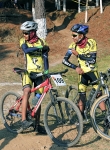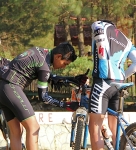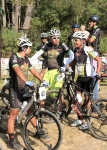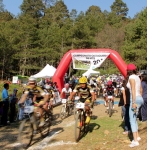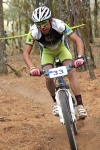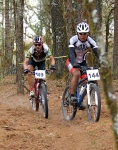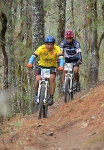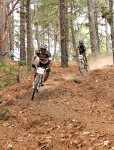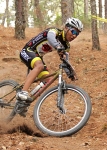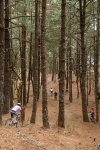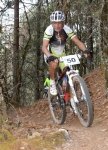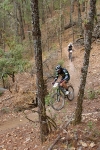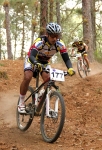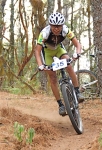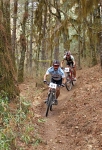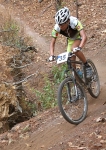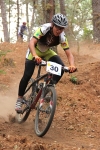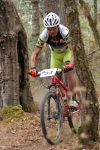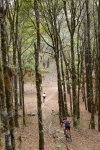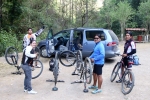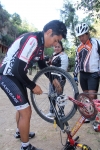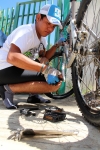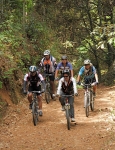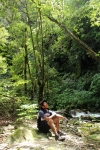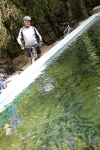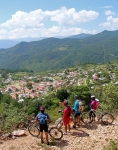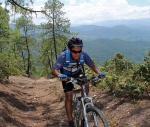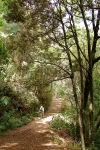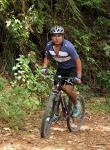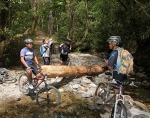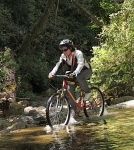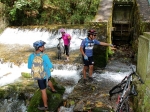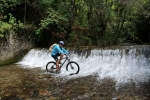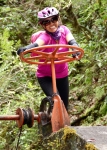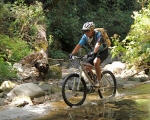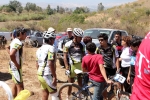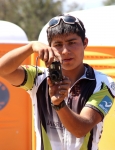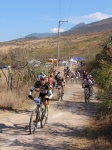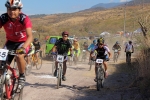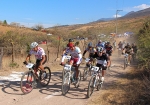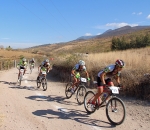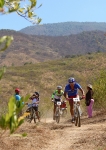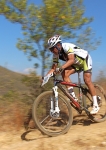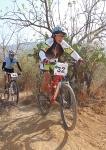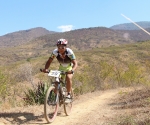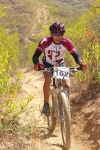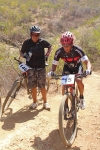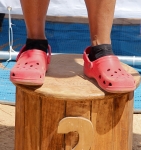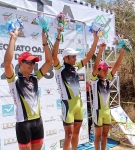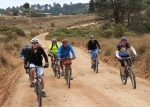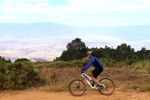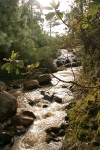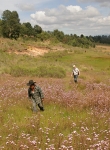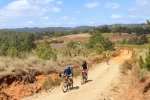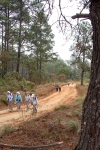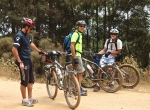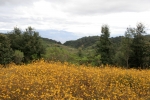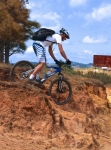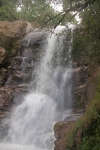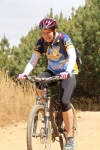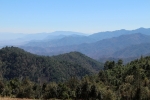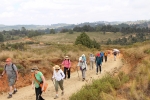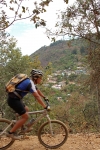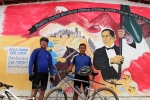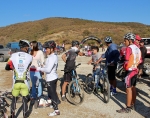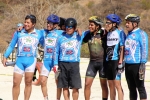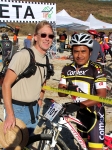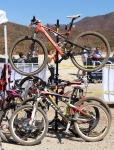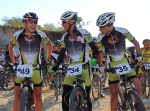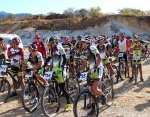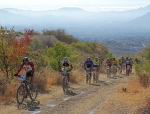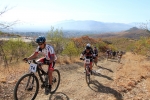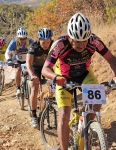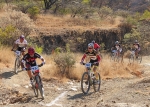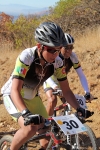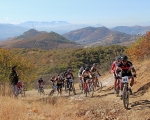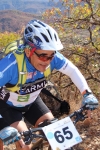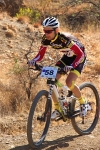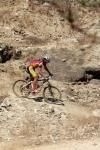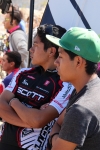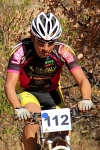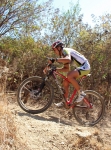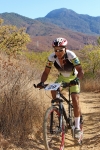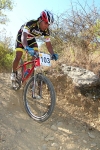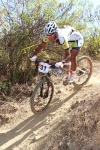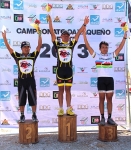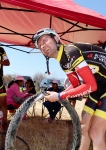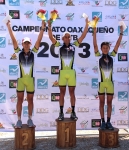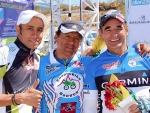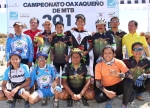The World Wildlife Fund manages an extensive forest preserve in the mountains just north of Oaxaca city, which includes miles of old logging roads and a ecotourism camp. The camp is the site of this race. The course uses some of these logging roads, but the exciting part is the singletrack “La Cabeza de Vaca” trail that squiggles through the forest on a narrow, loose tread – alternately climbing and then dropping among the trees. The circuit covers 4.8 miles (7.72 km), making it the longest of the race venues. The elevation gain and loss going around the loop amounts to 1153 feet (351 meters). There are few technical challenges on the course, but the singletrack is very narrow, the ground is quite loose and the deep covering of pine needles can be very slippery – so riders need to be alert! The last part of the race loop is a screamer downhill on the main access road leading back to the camp.
Category: Photos
GPS, Mountains, MTBing, Photos
Capulálpam Ride
by Larry • • 0 Comments
The small village of Guelatao, situated 52 kilometers from Oaxaca on Highway 175, is famous as the birthplace of Benito Juarez, likely the most famous (and possibly the only honest) president in Mexico’s checkered history as an independent nation. Two nearby towns are also somewhat famous and deserving of a visit: Ixtlan de Juarez and Capulálpam. The latter of these has the sort of ecotourism park common among villages in the Sierra Norte, all of which support mountain biking. One of the trails in the area – which consists almost entirely of a very pleasant logging road through the forest – runs 4.4 miles from the park until it deadends at the end of a short singletrack at a small water control dam. The ride out and back is a moderate endeavor, suitable for any rider of decent ability. Even at a leisurely pace the ride can be accomplished in three hours. The route shown in satellite view below includes a dogleg to a scenic point overlooking Capulálpam. As an added bonus, bikers can sightsee in Capulálpam, dine in Ixtlan and visit the memorial and museum to Benito Juarez in Gelatao – all of which make for a fine day’s outing. (The museum is supposed to be open and free Tuesday thru Sunday from 9 am to 4 pm. If it is closed, a key can be obtained at the municipal building next door.)
Foothills, GPS, MTBing, Photos, Racing
Mountain Bike Race at San Pablo Etla
by Larry • • 2 Comments
St. Patrick’s Day – Sunday, 17 March 2013 – found many of Oaxaca’s best mountain bikers competing for recognition and prizes on the race course set up near the new mountain park in San Pablo Etla. The luck ‘o’ the Irish was with eighteen riders who made it to the podium, but not with the many others whose tires got snakebit on the trail and had to push their bikes to the finish line. The race route covered a fair distance on dirt roads, but the exciting part was the singletrack that snaked up, down and around the hillsides, demanding skill and stamina to make it around the circuit. Congratulations to those who won their events! And thanks to all who took part and made it a grand day.
Countryside, GPS, Mountains, MTBing, Photos
Cuatro Venados Loop
by Larry • • 1 Comment
This loop ride is a cousin, of sorts, to the “San Pablo Cuatro Venados” ride which appears later on this page. Both versions of the ride begin and end in San Felipe del Agua, and both feature the very formidable climb up the mountainside to the tiny village of San Pablo Cuatro Venados. What sets this ride apart, though, is that it continues past 4 Venados, crossing through the high country at over 9000 feet elevation, then descends steeply through Santa Ines del Monte to Zaachila before returning to Oaxaca city (on mercifully level ground!). This is one of the epic rides around Oaxaca, and should not be taken lightly. The loop can be ridden in either direction, and is equally difficult either way. Pick your poison! If you can arrange a shuttle, you can eliminate the pain of the huge climb to Cuatro Venados and concentrate on the much more thrilling screamer of a downhill run back to Oaxaca.
The loop ride, start to finish, will take you 56.3 miles (90.6 km). The high point of the adventure is 9281 feet (2829 meters) in elevation. The uphill climb clocks in at 6219 feet (1895 meters). The ride is rated “Difficult” because of the length, steep gradients and altitude. There are no technical sections of trail (the entire route is on paved or dirt roads), but the unpaved sections can be quite rough in places and you will be moving at high speeds coming downhill.
Options for a shorter ride include starting and ending at the Zócalo in the center of Oaxaca rather than in San Felipe. This alone will take 7.0 miles (11.3 km) off the total distance. Using a shuttle to get to Cuatro Venados and riding just one way will cut the route in half. The segment from Cuatro Venados through Santa Ines to Zaachila amounts to just 11.3 miles (18.2 km), is mostly downhill and should take just 3 hours.
Foothills, MTBing, Photos, Racing
Mountain Bike Race at San Felipe del Agua
by Larry • • 2 Comments
Sunday, 17 February 2013, dawned bright and crisp — a perfect day for a mountain bike race on the trail network in the hills above San Felipe del Agua. A large field of contestants – over 140 racers – turned out for the event, along with quite a few spectators to line the route and cheer on their favorite riders. The race circuit was the same as for last year’s race, with a few slight changes to keep things interesting — see map below. Congratulations to the winners in the various race categories, and a big “Thank you!” to the crew that prepared the race course!

